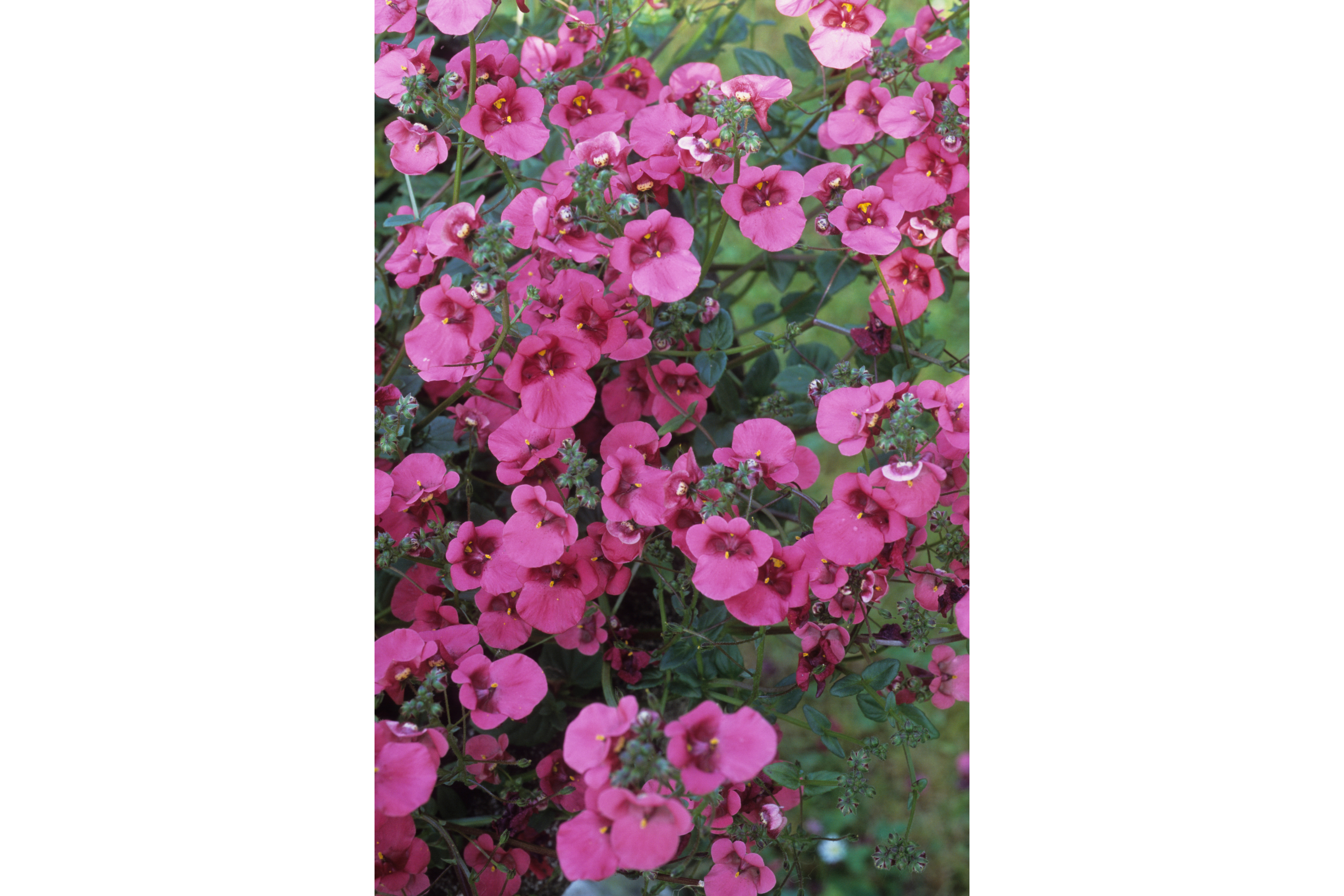Twinspur
(Diascia)

Description
Diascia is a genus of around 70 species of herbaceous annual and perennial flowering plants of the family Scrophulariaceae,native to southern Africa, including South Africa, Lesotho and neighbouring areas. The perennial species are found mainly in summer-rainfall areas such as the KwaZulu-Natal Drakensberg; about 50 species, mostly annuals, are found in the Western Cape and Namaqualand, winter rainfall areas. Their common name is twinspur, in reference to the two (usually downward-pointing) spurs to be found on the back of the flower. These help to distinguish them from the similar (and closely related) genera Alonsoa and Nemesia. The spurs contain a special oil, which is collected in the wild by bees of the genus Rediviva (e.g. R. longimanus) that appear to have coevolved with the plants, as they have unusually long forelegs for collecting the oil. In gardens, Diascia cultivars (mostly hybrids) have become extremely popular as colourful, floriferous, easily grown bedding plants in recent years Surprisingly, the generic name (from the Greek di two and askos bag, pouch or sack) does not refer to the spurs, but to the two translucent sacs, or pouches, known as 'windows', found in the upper part of the corolla of the original type specimen, Diascia bergiana. Diascia species in the section Racemosae have similar windows, but in some species they merge into one. The windows may help oil-collecting bees to find the correct position within the corolla when gathering oil from the glands within the spurs. Most diascia species are short-growing, straggling plants, reaching no more than 30–45 centimetres (12–18 in) in height, although Diascia rigescens can reach 60 cm (24 in), and the rather similar D. personata (with which it is often confused)up to 120 cm (47 in) or so. Some Diascia species spread by means of stolons, while others produce multiple lax stems from a single crown. The flowers are borne in loose terminal racemes. The corolla is five-lobed, and normally pink or rose-coloured in the perennial species most commonly seen in cultivation. Dark purplish patches of oil glands may make the flowers of some species appear bicoloured.
Taxonomic tree:







